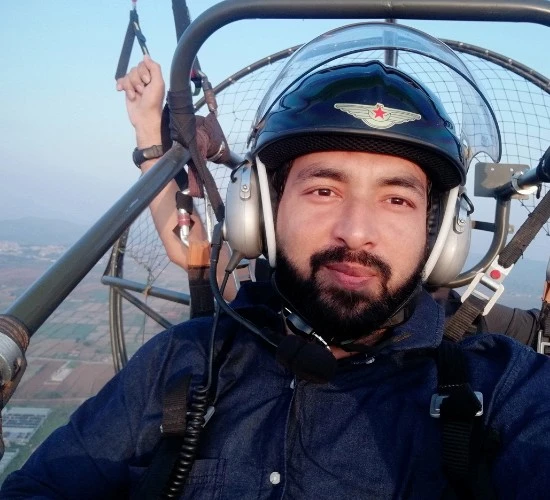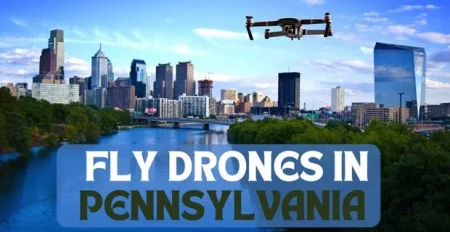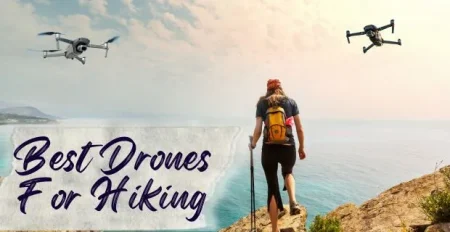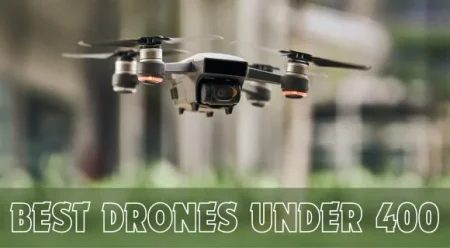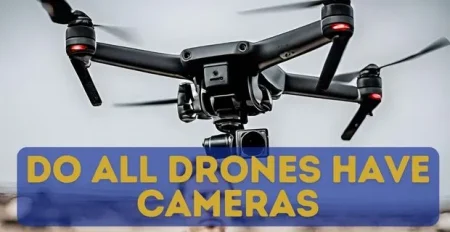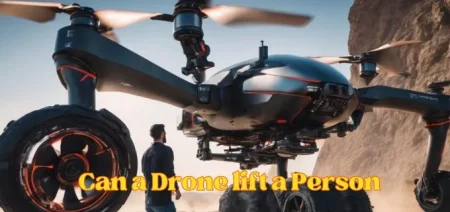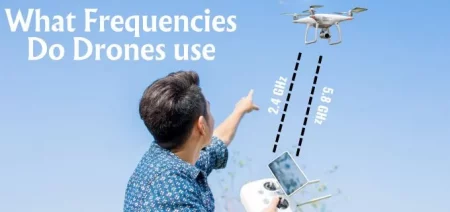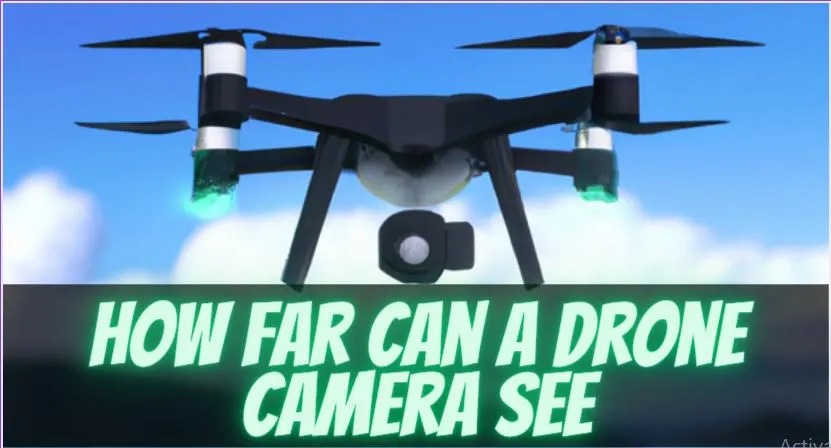
Drones have become increasingly popular in recent years as their technology has advanced and become more accessible to the general public. With the ability to fly high in the sky and capture stunning aerial footage, it’s no wonder that drones have become a go-to tool for photographers, videographers, and hobbyists alike.
How Far Can a Drone Camera See
One of the most important features of a drone is its camera, which allows users to capture breathtaking views from above. However, the question remains: how far can a drone camera see?
This question’s answer is more complex than you may anticipate. Several factors can affect a drone camera’s range, including the type of drone, the quality of the camera, and the weather conditions.
For example, a high-end professional drone with a top-of-the-line camera may see a few miles in clear conditions, while a budget drone with a lower-quality camera may only see a few hundred feet.
Additionally, weather conditions such as fog or rain can severely limit a drone’s visibility, even if the camera can see long distances.

Knowing the range of a drone camera is crucial for several reasons. First, it helps you determine the areas you can cover with your drone camera. Secondly, it helps you avoid losing your drone or experiencing signal loss during flights. In this article, we will explore the various factors that affect the range of a drone camera and discuss the maximum range of popular drone cameras in ideal conditions. We will also delve into the realistic range of drone cameras in various conditions, share tips for extending the range of a drone camera, and address legal and ethical considerations when using a drone camera.
Definition of drone camera
A drone camera is mounted on a drone or unmanned aerial vehicle (UAV) that captures photos and videos from an aerial perspective. A ground pilot can remotely operate the camera or, alternatively, be programmed to track a predetermined flight trajectory. The camera may be fixed or equipped with a gimbal that stabilizes the camera to prevent shaky footage.
What is the visual range of the drone camera?
The visual range of a drone camera depends on various factors, such as the camera’s quality, resolution, lens type, and drone altitude. Generally, most consumer-grade drone cameras have a visual range of 400 to 800 meters in clear line-of-sight conditions. However, at night, the range of the drone camera is significantly reduced, with the ability to pick up an image up to approximately 180 feet away before the image quality becomes blurry.
It’s important to note that the visual range is not the same as the maximum flight range of a drone. While a drone can fly several kilometers away from the controller, the camera’s visual range may not extend that far, which means the camera may lose signal or quality as the drone moves further away.
Furthermore, a drone camera’s visual range can be significantly limited by weather conditions such as fog, rain, or haze. Therefore, it is crucial to consider these factors while planning a drone flight.
How Far can you Zoom in from a Drone?
The zoom capability of a drone camera varies depending on the type of camera, the drone model, and the camera’s resolution. Generally, consumer-grade drone cameras have a digital zoom capability of up to 2-4x, but some higher-end professional-grade drones may have optical zoom capabilities of up to 30x.
It’s important to note that the zoom quality may also be affected by the altitude of the drone, as well as the lighting and weather conditions. The higher the altitude, the less detailed the zoomed-in image may appear due to atmospheric interference. Additionally, if the lighting conditions are poor or there is a lot of movement in the image, the zoomed-in image may be blurry or pixelated.
While drone cameras offer zoom capabilities, the zoom’s quality and range will vary depending on the specific drone and camera being used and the environmental conditions during the flight.
Approximate Visual Range of different Drones:
I have created a table with the visual range of some popular drone cameras. However, it’s important to note that the visual range can vary depending on various factors, such as the environment and weather conditions, altitude, and obstacles. Additionally, some drones may have a legal maximum visual range based on regulations in your area.
Here’s an example table with the visual range of some popular consumer-grade drone cameras:
| Drone Camera Model | Visual Range-Approx (in ideal conditions) |
| DJI Mavic Air 2 | 1 km |
| DJI Mini 2 | 900m |
| DJI Phantom 4 Pro V2.0 | 900 m |
| Parrot Anafi | 700 meter |
| Autel EVO II | 800M |
| Yuneec Typhoon H Pro | 600 Meters |
| GoPro Karma |
500 Meters |
How Far Can a Drone Camera See at Night?
The range of a drone camera at night can be significantly limited compared to its range during the day. It is because the camera’s ability to see in low light conditions depends on its sensor sensitivity and the amount of ambient light available.
Most drone cameras have sensors that perform poorly in low light conditions, making capturing high-quality images or videos difficult. However, some drone cameras have night vision technology or infrared sensors that can detect heat signatures and provide a clear view in the dark.
The range of a drone camera at night can also be affected by the type of lighting available in the area. For example, if the area is well-lit with streetlights or other sources of artificial light, the drone camera may be able to see farther than if the area is completely dark.
Generally, the maximum range of a drone camera at night will depend on its sensor sensitivity, the type of lens used, and the amount of ambient light available in the area. However, it’s important to note that flying a drone at night may not be legal in all areas, and pilots should always follow local regulations and guidelines to ensure safe and legal operations.
In the following sections, we will explore the factors that affect the range of a drone camera, as well as some tips and tricks for maximizing its visibility. Whether you’re a seasoned drone pilot or just starting, understanding the limitations of drone camera vision is key to creating stunning aerial content.
Factors That Affect Drone Camera Range
As previously stated, numerous factors can impact a drone camera’s range. Let’s take a closer look at some of the most important ones:
Drone Type
The type of drone you’re using can significantly impact its camera’s range. Generally, professional-grade drones are equipped with high-end cameras capable of seeing long distances, while budget drones often come with lower quality cameras with a more limited range.
Camera Quality
The range of your drone camera can also be influenced by its quality. Higher-quality cameras with larger sensors and better lenses will generally be able to see further than lower-quality cameras.
Weather Conditions
The range of a drone camera can be significantly affected by various weather conditions, including fog, rain, and wind. In ideal conditions, a high-end drone camera may see several miles, but in poor weather conditions, visibility may be limited to only a few hundred feet.
Signal Interference
Signal interference can also affect a drone camera’s range. If your drone is operating in an area with many Wi-Fi signals or other electronic interference, it may have difficulty transmitting clear video footage back to your controller.
Transmission system and frequency:
The transmission system and frequency used to send video and control signals from the drone to the ground station can also affect the range of a drone camera. Some drones use radio frequency (RF) transmissions, while others use Wi-Fi or Bluetooth. RF transmissions generally have a longer range than Wi-Fi or Bluetooth transmissions.

Line-of-sight limitations:
The line-of-sight between the drone and the ground station also limits the range of a drone camera. If there are obstacles, such as buildings, trees, or hills between the drone and the ground station, the range of the drone camera will be limited.
Battery life:
The range of a drone camera is also contingent upon the drone’s battery life. The majority of drones have restricted flight times as a result of their limited battery capacity. As the battery level decreases, the different features may stop working, and the range of the drone camera will also decrease.
Tips for Maximizing Drone Camera Range
Let’s explore some tips and tricks for maximizing its visibility:
Fly in Clear Weather Conditions
Try to fly your drone in clear weather conditions with minimal wind, rain, or fog whenever possible. This will give your drone camera the best chance of seeing as far as possible.
Use a High-Quality Camera
Investing in a high-quality camera with a large sensor and good lenses can significantly improve your drone camera’s range.
Avoid Signal Interference
Be mindful of potential signal interference in the area where you’re flying your drone. Try to avoid areas with a lot of Wi-Fi signals or other electronic interference.
Know Your Drone’s Limits
Understanding the limitations of your drone’s camera and flying within its range is crucial for staying safe and legal while capturing stunning aerial footage.
Extreme Examples of Long-Distance Drone Camera Shots
While it’s important to understand the limitations of drone camera range, it’s also worth noting that some remarkable examples of long-distance drone shots have pushed the boundaries of what was previously thought possible.
For example, in 2017, a team of filmmakers used a drone to capture footage of a volcano erupting in Guatemala from over 7 miles away. The drone was equipped with a high-end camera and could capture stunning footage of the eruption that would have been impossible to capture using traditional methods.
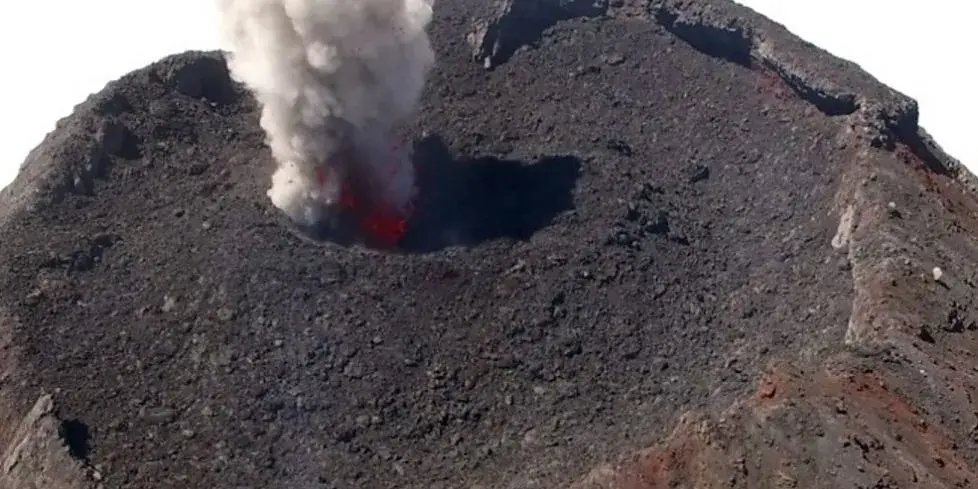
Another impressive example is the footage captured by a drone at Yosemite National Park, which showed a climber scaling the face of El Capitan from a distance of over a mile away. The drone’s camera could zoom in on the climber and capture incredible footage of their ascent.

These extreme examples of long-distance drone shots show how powerful this technology can be when used properly. However, it’s important to note that these shots were captured by experienced professionals using high-end equipment and should not be attempted by novice drone pilots.
In addition to the technical skills required to capture long-distance shots, there are also legal and safety considerations to remember. In the United States, the Federal Aviation Administration (FAA) requires drone pilots always to keep their drones within their visual line of sight. It means that capturing shots from several miles away is generally not permitted.
Legal and Ethical Considerations
Consider your actions’ legal and ethical implications when flying a drone camera. Here are some of the key considerations to keep in mind:
A. Regulations:
Depending on where you live, there may be regulations governing drone camera use. These regulations may include requirements for registration, licensing, and certification. Before operating your drone camera, conducting research and comprehending the applicable regulations is crucial.
B. Privacy:
Using drone cameras enables the capture of images and videos of individuals and property. It’s important to respect the privacy of others and avoid flying your drone camera in areas where people may have a reasonable expectation of privacy, such as in their backyard.
C. Safety:
Flying a drone camera can pose safety risks to people on the ground and other aircraft. It’s important to follow safety guidelines, such as keeping a safe distance from people and property and avoiding flying near airports or other areas where other aircraft may be operating.
D. Ethical considerations:
In addition to legal and safety considerations, it’s important to consider the ethical implications of using a drone camera. For example, using a drone camera to spy on others or violate their privacy is illegal and unethical.
Conclusion
Numerous factors, such as the quality of the camera, weather conditions, and the drone’s battery life, can impact a drone camera’s visual range. These factors include the quality of the camera, weather conditions, battery life, and the type of drone being used. On average, most drone cameras range around 500 to 1000 meters in ideal conditions.
Nonetheless, this range can be considerably diminished under unfavorable weather circumstances, such as fog, rain, or wind. Therefore, it is vital to contemplate these factors and devise appropriate drone flight plans to guarantee safe and effective operations.
As technology evolves, drone cameras’ maximum ranges will likely continue to increase, offering more opportunities for aerial photography and videography.
